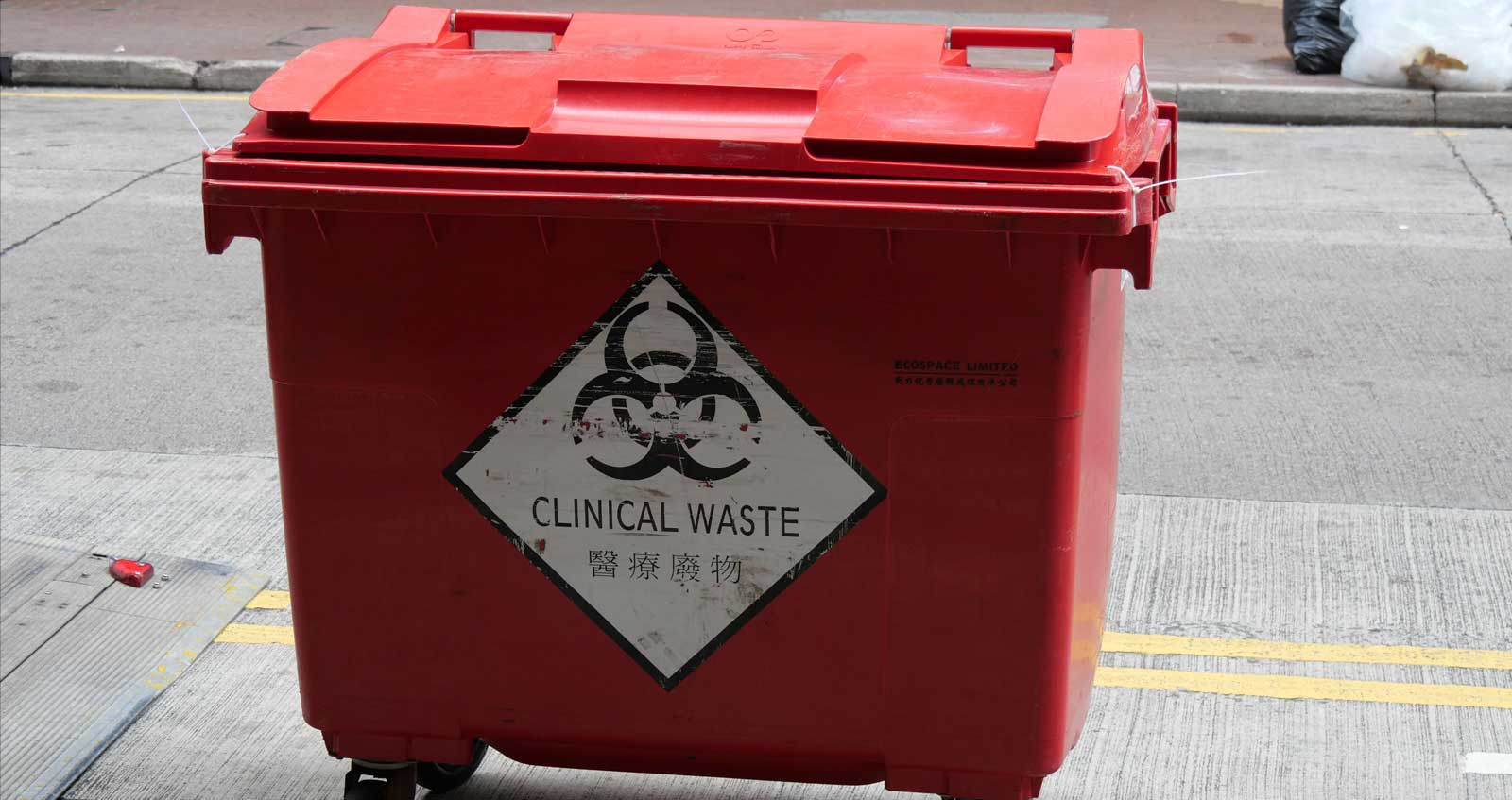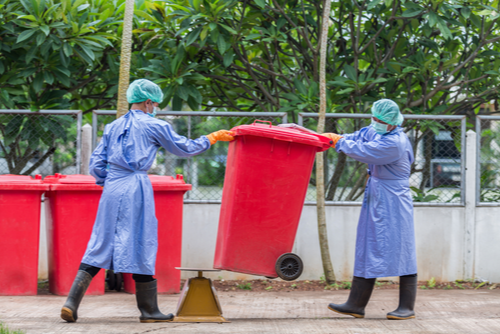Proactive Wellness Solutions: Picking the Best Medical Waste Removal Near You
Proactive Wellness Solutions: Picking the Best Medical Waste Removal Near You
Blog Article
Remain Ahead of Rules: Specialist Recommendations on Medical Garbage Disposal
In a world where the health care market is frequently evolving, it is essential for clinical centers to remain ahead of laws when it concerns the appropriate disposal of clinical waste. With strict standards and frequent regulative modifications, it can be testing to navigate the complexities of this process. Nevertheless, with professional advice, facilities can ensure compliance and mitigate dangers related to incorrect waste disposal. From understanding the different classifications of clinical waste to carrying out the right collection and segregation methods, this conversation will supply actionable ideas and valuable insights to help centers stay ahead of guidelines in the ever-changing landscape of clinical garbage disposal.
Understanding Medical Waste Categories
Understanding medical waste groups is essential for correct disposal and management in healthcare centers. Clinical waste refers to any waste produced by health care tasks that might present a threat to public health or the setting. It is essential to classify clinical waste accurately to ensure its risk-free handling, disposal, transport, and therapy.
There are a number of groups of clinical waste that medical care centers require to be accustomed to. The most usual classifications include transmittable waste, pathological waste, sharps waste, pharmaceutical waste, and chemical waste. Each group has certain standards and regulations for its appropriate management and disposal.
Contagious waste consists of products contaminated with blood or other bodily liquids, such as handwear covers, dress, and lab societies. Pathological waste refers to human cells, body organs, or body parts that require special delivery and disposal. Sharps waste consists of used needles, syringes, and other sharp items that can cause injury and send infections. Pharmaceutical waste consists of ended, unused, or infected medicines that need cautious handling and disposal. Chemical waste includes solvents, anti-bacterials, and various other chemical compounds utilized in health care facilities.
Staying Up-To-Date With Regulatory Modifications
Staying current with regulatory adjustments is vital for healthcare centers to make sure conformity and correct administration of clinical garbage disposal. medical waste removal near me. With laws continuously developing, it is necessary for health care facilities to stay up-to-date to prevent penalties, penalties, and prospective harm to the environment and public health
To stay in advance of regulatory changes, health care centers need to develop a system for surveillance and tracking updates. This can be done by signing up for governing newsletters, attending workshops and conferences, and actively participating in sector associations. Furthermore, facilities need to designate a personnel or team responsible for staying notified and sharing information to pertinent stakeholders.
Normal communication with regulatory companies is additionally important. Healthcare facilities must develop partnerships with local, state, and federal firms to ensure they are aware of any adjustments in regulations that might impact their waste management practices. This can be done with routine meetings, participation in public comment periods, and proactive engagement with regulatory firms.
Moreover, healthcare facilities must consider partnering with waste monitoring business that concentrate on clinical waste disposal (medical waste disposal services with WasteX). These firms are usually skilled in the most up to date policies and can offer guidance and assistance to make sure compliance
Applying Correct Collection and Partition Techniques
To properly manage clinical garbage disposal, medical care facilities must establish appropriate collection and segregation approaches according to regulatory guidelines. Implementing these approaches makes sure the safe handling and disposal of possibly harmful materials, protects the environment, and decreases the risk of injuries and infections to health care employees and the public.
Proper collection and segregation methods include the usage of marked containers and identifying systems. Healthcare centers must supply plainly labeled containers for various sorts of clinical waste, such as sharps, infectious waste, pharmaceutical waste, and non-hazardous waste. These containers must be color-coded and clearly significant to prevent confusion and advertise very easy identification.
Furthermore, healthcare facilities ought to train their team on the proper procedures for accumulating and segregating medical waste. This consists of enlightening them on the various kinds of waste, the ideal containers to make use of, and the importance of following guidelines and laws. Routine training sessions and correspondence course must be visit site conducted to ensure that personnel members remain current on ideal methods.
In addition, medical care centers ought to develop a system for routine collection and disposal of clinical waste. This may entail partnering with accredited waste management firms that specialize in medical garbage disposal. These business will make certain that the accumulated waste is moved and gotten rid of in compliance with governing requirements.
Choosing the Right Disposal Methods

Incineration is just one of one of the most effective and common methods for taking care of particular kinds of clinical waste, such as pathological waste and sharps. It entails the regulated burning of waste at high temperature levels, lowering it to ash. However, incineration can launch hazardous toxins right into the air and add to air contamination.

Other disposal approaches include chemical treatment, microwave therapy, and landfilling. Chemical therapy involves making use of chemicals to neutralize the waste and decontaminate. Microwave therapy uses microwave energy to warm and disinfect the waste. Landfilling includes burying the waste in a designated garbage dump location (medical waste disposal services with WasteX). However, landfilling should be the last resort because of the potential risk of contamination to soil and groundwater.
Guaranteeing Compliance Via Documents and Training
After thoroughly taking into consideration the appropriate disposal approaches for clinical waste, health care centers have to make sure conformity with policies and decrease ecological effect by executing efficient paperwork and training procedures. This action is essential in preserving a secure and lasting atmosphere for both healthcare employees and the basic public.

Medical care employees who deal with medical waste needs to obtain suitable training on waste partition, dealing with, and disposal procedures. By providing thorough training, healthcare facilities can encourage their team to make educated decisions and minimize the threat of improper waste disposal.
Final Thought
To conclude, staying in advance of guidelines in clinical garbage disposal is essential for health care facilities. medical waste removal. Understanding the various groups of medical waste, staying updated with governing modifications, executing appropriate collection and segregation approaches, picking the ideal disposal methods, and making sure conformity with documentation and training are all crucial actions. By adhering to these guidelines, medical care organizations can effectively manage and get rid of of clinical waste in a safe and accountable fashion
From understanding the various categories of medical waste to carrying out the appropriate collection and segregation approaches, this discussion will certainly supply beneficial understandings and workable tips to aid centers remain in advance of regulations in the ever-changing landscape of medical waste disposal. - medical waste disposal services with WasteX
The most typical groups include transmittable waste, pathological waste, sharps waste, pharmaceutical waste, and chemical waste. Medical care centers should offer plainly labeled containers for different kinds of medical waste, such as sharps, transmittable waste, pharmaceutical waste, and non-hazardous waste. Medical care centers ought to develop a detailed system to tape and track all aspects of clinical waste disposal, including kinds of waste created, amounts, and disposal approaches utilized. Health care employees who take care of medical waste needs to get suitable training on waste segregation, managing, and disposal procedures.
Report this page